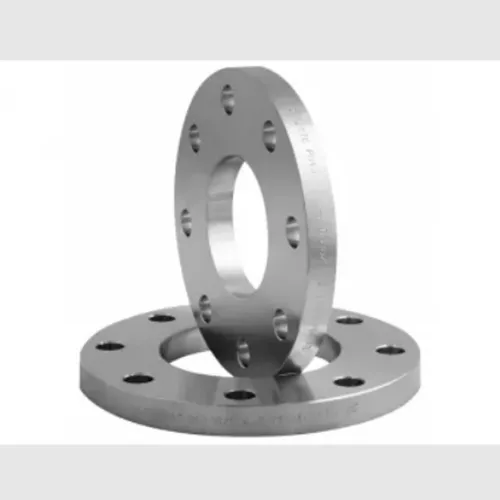-
Cangzhou Yulong Steel Co., Ltd.
-
Phone:
+86 13303177267 -
Email:
admin@ylsteelfittings.com
- English
- Arabic
- Italian
- Spanish
- Portuguese
- German
- kazakh
- Persian
- Greek
- French
- Russian
- Polish
- Thai
- Indonesian
- Vietnamese
- Zulu
- Korean
- Uzbek
- Hindi
- Serbian
- Malay
- Ukrainian
- Gujarati
- Haitian Creole
- hausa
- hawaiian
- Hebrew
- Miao
- Hungarian
- Icelandic
- igbo
- irish
- Japanese
- Javanese
- Kannada
- Khmer
- Rwandese
- Afrikaans
- Albanian
- Amharic
- Armenian
- Azerbaijani
- Basque
- Belarusian
- Bengali
- Bosnian
- Bulgarian
- Catalan
- Cebuano
- China
- China (Taiwan)
- Corsican
- Croatian
- Czech
- Danish
- Esperanto
- Estonian
- Finnish
- Frisian
- Galician
- Georgian
- Kurdish
- Kyrgyz
- Lao
- Latin
- Latvian
- Lithuanian
- Luxembourgish
- Macedonian
- Malgashi
- Malayalam
- Maltese
- Maori
- Marathi
- Mongolian
- Myanmar
- Nepali
- Norwegian
- Norwegian
- Occitan
- Pashto
- Dutch
- Punjabi
- Romanian
- Samoan
- Scottish Gaelic
- Sesotho
- Shona
- Sindhi
- Sinhala
- Slovak
- Slovenian
- Somali
- Sundanese
- Swahili
- Swedish
- Tagalog
- Tajik
- Tamil
- Tatar
- Telugu
- Turkish
- Turkmen
- Urdu
- Uighur
- Welsh
- Bantu
- Yiddish
- Yoruba

Nov . 27, 2024 00:10 Back to list
Understanding ANSI Class 125 Flanges and Their Applications in Industrial Settings
Understanding ANSI Class 125 Flanges
Flanges play a crucial role in piping systems, providing a reliable means of connecting various components like pipes, valves, and pumps. Among the different flange standards, ANSI (American National Standards Institute) Class 125 flanges are widely used in various industrial applications. This article delves into the characteristics, specifications, and applications of ANSI Class 125 flanges.
What are ANSI Class 125 Flanges?
ANSI Class 125 flanges conform to the ANSI/ASME B16.1 standard, which outlines the dimensions, tolerances, and materials for cast iron flanges. Class 125 indicates the pressure rating of the flange, which is typically up to 125 psi at a temperature of 100°F. These flanges are predominantly utilized in systems that handle low to moderate pressures, making them suitable for water, steam, and other fluids in a range of industrial settings.
Key Specifications
1. Material ANSI Class 125 flanges are primarily made from cast iron, which provides excellent strength and durability. The most common material grades for these flanges include Gray Cast Iron and Ductile Iron. Ductile iron is particularly favored for its enhanced mechanical properties, including higher tensile strength and impact resistance.
2. Dimensions ANSI Class 125 flanges are available in various sizes, connecting to piping systems typically ranging from ½ inch to 24 inches in diameter. The dimensions are standardized, ensuring compatibility with other ANSI flanges and fittings.
3. Pressure Ratings The pressure rating of Class 125 flanges allows them to operate safely under low to moderate pressure conditions. However, users must always consider factors such as temperature and the nature of the fluid to ensure the selected flange is suitable for the intended application.
4. Bolting ANSI Class 125 flanges use specific bolt holes for attachment, generally requiring a specific number and size of bolts depending on the flange dimensions. The standard bolt hole sizes enable easy installation and allow for the secure fastening of components within the piping system.
ansi class 125 flange

Applications
Due to their design and material properties, ANSI Class 125 flanges are extensively used in various industries, including
- Water Treatment These flanges are commonly found in water distribution systems, where they connect pipelines and control valves. - HVAC Systems Class 125 flanges are used in heating, ventilation, and air conditioning systems for their efficiency in managing fluid direction and flow. - Municipal Applications Many municipal projects, such as sewer systems and stormwater drainage, utilize Class 125 flanges due to their reliability and cost-effectiveness. - Industrial Processes Several industrial processes that operate under moderate pressure conditions utilize these flanges, including food processing and chemical manufacturing.
Advantages
The advantages of ANSI Class 125 flanges include
- Ease of Installation Their standardized dimensions and bolt hole patterns allow for quick and efficient installation, reducing downtime during maintenance or upgrades. - Cost-Effectiveness Being made from cast iron, these flanges are relatively inexpensive compared to alternatives made from stainless steel or alloy materials. - Durability With proper maintenance, ANSI Class 125 flanges can last for many years, providing a reliable connection within piping systems.
Conclusion
In summary, ANSI Class 125 flanges serve as a fundamental component in many piping systems across various industries. Their standardized specifications, combined with the advantages of ease of installation and cost-effectiveness, make them a popular choice for engineers and project managers alike. When selecting flanges for any application, it is essential to consider the specific operating conditions, as well as compatibility with other components in the system. Understanding these factors ensures the reliability and efficiency of the entire piping network.
Latest news
-
ANSI 150P SS304 SO FLANGE
NewsFeb.14,2025
-
ASTM A333GR6 STEEL PIPE
NewsJan.20,2025
-
ANSI B16.5 WELDING NECK FLANGE
NewsJan.15,2026
-
ANSI B16.5 SLIP-ON FLANGE
NewsApr.19,2024
-
SABS 1123 FLANGE
NewsJan.15,2025
-
DIN86044 PLATE FLANGE
NewsApr.19,2024
-
DIN2527 BLIND FLANGE
NewsApr.12,2024
-
JIS B2311 Butt-Welding Fittings LR/SR 45°/90° /180°Seamless/Weld
NewsApr.23,2024











